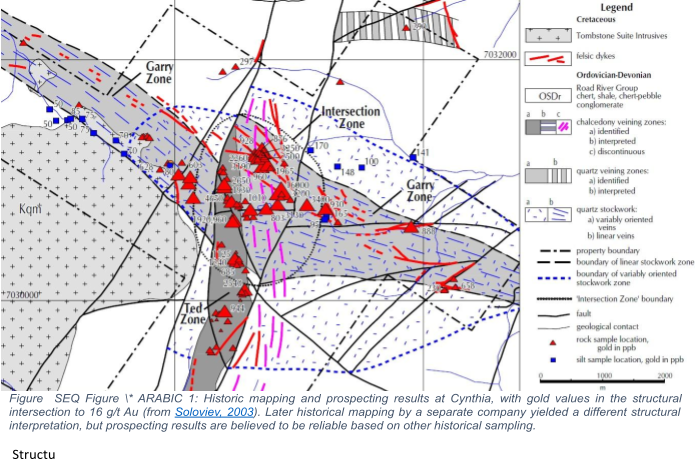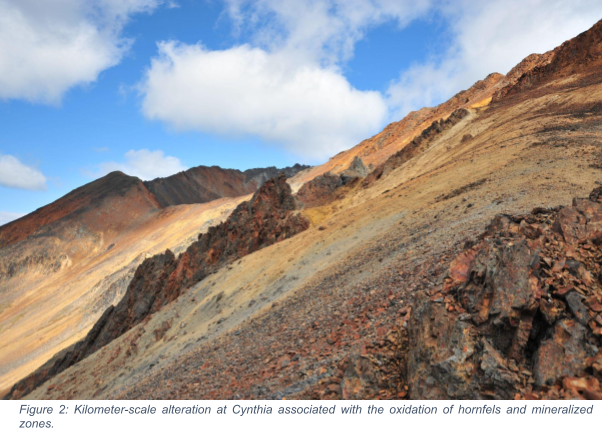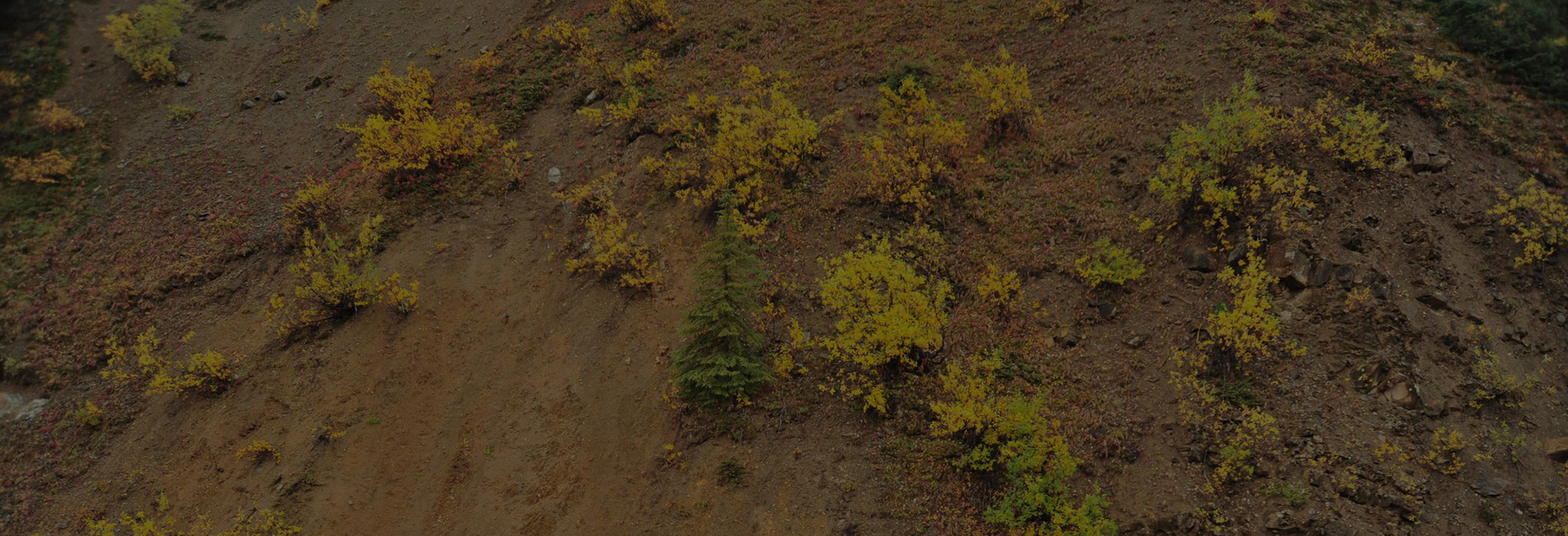- Project Size: 1,399 hectares
- Reduced Intrusion Related Gold System
- 2×2 km zone of alteration, veining and elevated gold geochemistry between two Tombstone suite intrusions presents a bulk tonnage gold target with potential for high grade structural zones
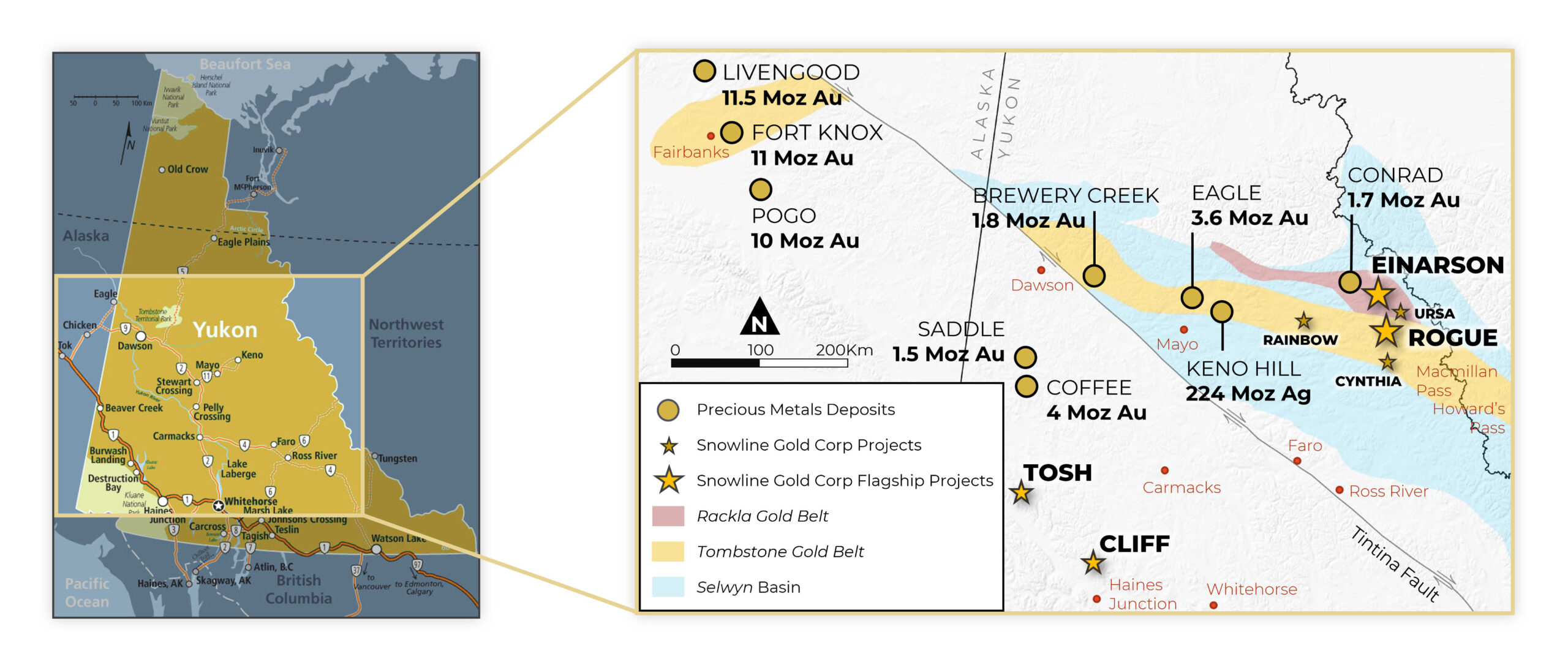
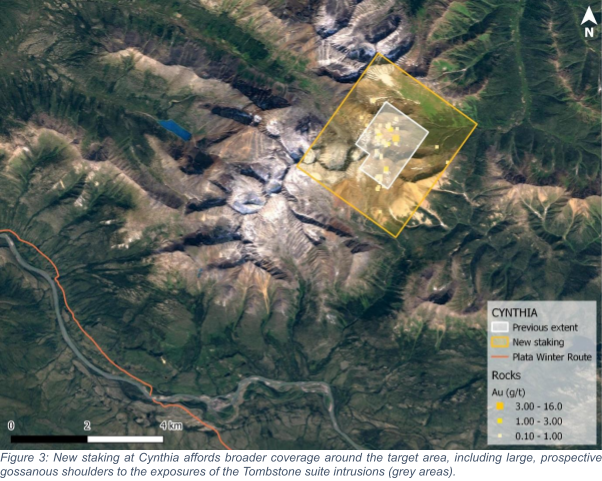
The Cynthia claims cover a 4 square kilometre area of gold mineralization between two adjacent exposures of a Cretaceous Tombstone suite intrusion. Mineralization is controlled by district-scale fault zones and is especially intense in the central part of the project. Surface grab samples in these zones commonly assay from 200 ppb to 3 grams per tonne gold, with values up to 16 g/t Au in a central zone. Cynthia is along strike of the past producing Plata silver mine, and is within 8 km of an inactive heavy equipment winter access trail that connects to the North Canol Road.
Cynthia is interpreted to have both bulk-tonnage and high grade, structurally-controlled exploration potential . Historical first pass drilling in 2010 returned broad zones of elevated gold associated with extensive quartz veining and stockwork, including 1.2 g/t Au over 6.5 m within a broader interval of 0.43 g/t Au over 32 m (drilled widths given, true widths unknown). Approximattely 1,100 m of historical drilling was completed on the property in 7 holes.
The Cynthia property is located between two Cretaceous quartz monzonite stocks in a zone of variably folded and faulted, late Paleozoic Selwyn Basin passive margin sedimentary rocks.
The two stocks are thought to be apophyses of a larger intrusion at depth. Adjacent sedimentary rocks have undergone intense hornfelsing, with abundant pyrite and pyrrhotite.
Two prominent structural zones intersect in the saddle zone between the intrusions. These structures host gold-bearing massive and drusy quartz veins. Within the intersection zone are zones of intense stockwork and strong brecciation, as well as numerous felsic dykes. Multi-staged gold mineralization in the quartz veins, stockwork and altered quartz porphyry dykes include sulphide minerals (mainly pyrite and arsenopyrite) and elevated As, Bi and Ag values. Abundant chalcedony accompanied by elevated Sb, Hg, Ag and Pb values has been variously interpreted by historical operators to represent a late-stage epithermal gold environment, or to represent an earlier sedex-style mineralizing event.
A program of geological mapping, historical core review, drone surveying and geochemical sampling is planned to put historical results in context and to establish a drilling strategy for the project.
